Ground Force: 10 Top Ground Covers for Your Garden
Leaving your soil uncovered in the garden is a bit like walking around in the hot sun with no hat — you’re asking for trouble. Bare soil is a magnet for weeds, their seeds blown into your garden by the wind or dropped by birds. Topsoil or potted plants can also contain weed seeds.
However, weeds are only part of the problem with exposed ground in the garden. The soil can also dry out very quickly, creating drought issues for plants, and will erode easily in windy conditions. Covering the soil with a mulch, such as bark, shredded pine and pea straw, is a good interim solution, but these have to be replaced eventually. I think it’s far better to go for a living mulch — in other words, a ground cover.
Ground covers help to insulate the soil when the temperature gets very hot or cold. They also help build up humus levels in the soil and provide habitat for beneficial insects. Unlike bark and pebble mulches, ground covers can also add color to the garden with attractive leaves or flowers. There are many to choose from; any plant that will hug the soil, leaving little bare soil exposed, can be classed as a ground cover, whether it’s an herb, a perennial or a low-growing shrub. Take a look at the all-around-best ground covers below and think about adding some of these useful plants to your garden this summer.
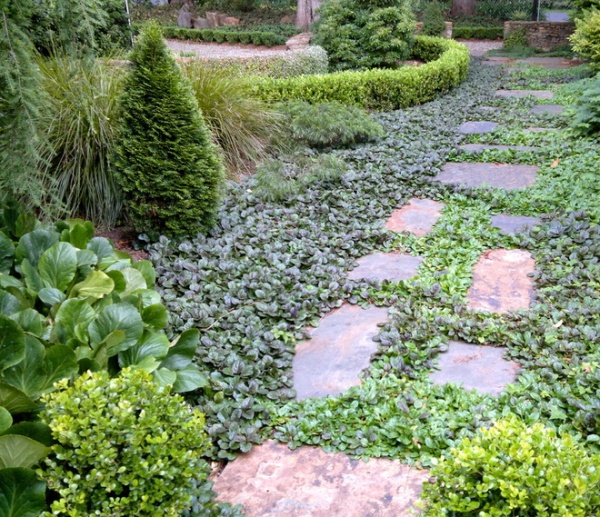
1. Ajuga
Also known as bugleweed, ajuga is a member of the mint family that grows well in shade. It will spread to form a dense carpet of rounded leaves in a variety of colors, including purple, bronze and green. There are also several variegated types. White, pink or blue flowers appear in spring and summer. Frost-hardy ajuga can smother other plants if conditions are ideal (moist shade), but the occasional trim will keep it under control. Well-known cultivars include ‘Catlins Giant’, ‘Burgundy Lace’, ‘Black Scallop’ and ‘Pink Elf’.
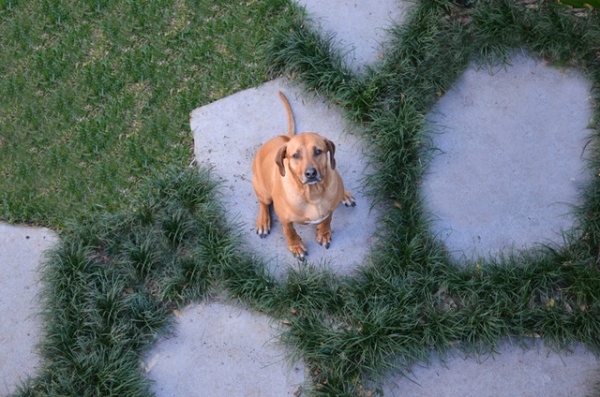
2. Mondo Grass
(Ophiopogon japonicus)
Mondo grass is a strappy-leaved evergreen clump-forming perennial that is tolerant of sun and shade, as well as drought. Dwarf mondo grass (O. japonicus ‘Nana’) grows to about 1 foot in height and will spread slowly to cover large areas. To speed up the process, break up clumps every couple of years. Black mondo grass (O. planiscapus ‘Nigrescens’) has a similar form but prefers full sun.
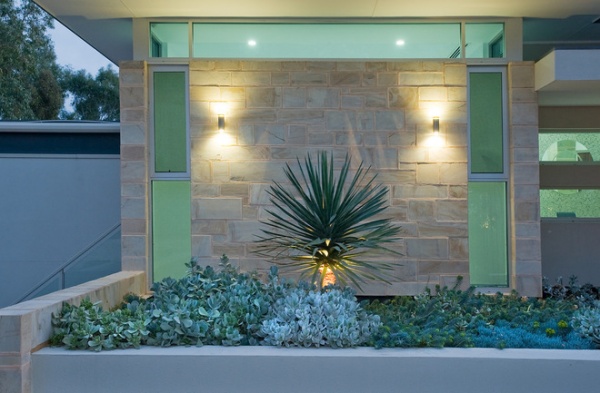
3. Low-Growing Succulents
For hot, sunny, bare areas in the garden, why not plant a selection of mat-forming succulents, like the ones in this garden? They look ideal planted with taller showcase plants, such as dracaena, yucca and aloe. Most have attractive foliage and are very low maintenance, needing little water, pruning or feeding.
Succulents that make good ground covers include low-growing varieties of Senecio serpens, which has stunning blue leaves; kalanchoe; Sempervivum; sedum; and Echeveria.
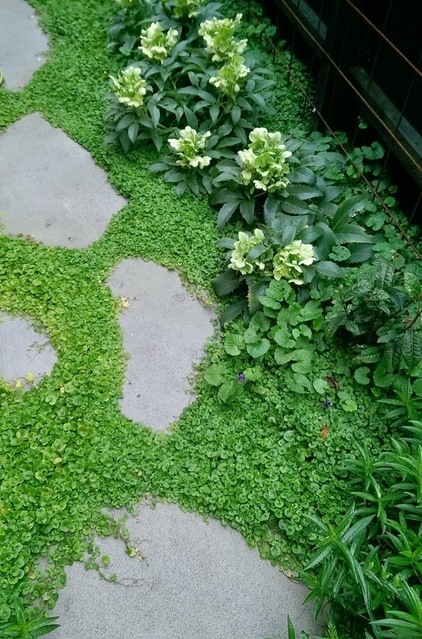
4. Kidney Weed
(Dichondra repens)
This evergreen spreading perennial has shiny green heart-shaped leaves and inconspicuous green flowers, and is often used as a substitute lawn in low-traffic areas of the garden. It will grow in full sun or partial shade as long as it has plenty of moisture. When conditions are ideal, it will grow quite quickly.
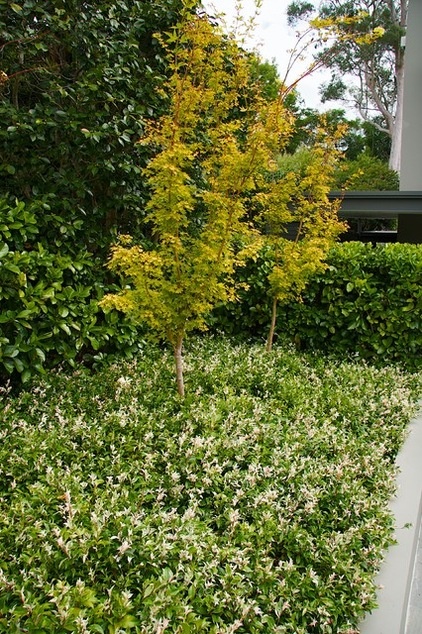
5. Star Jasmine
(Trachelospermum jasminoides)
Usually grown as a climber, versatile star jasmine is now being grown as a ground cover and clipped shrub. Its popularity is due to a number of factors, including its stunning scented white flowers, attractive dark green foliage that looks good all year and ability to tolerate sun, shade and some frost.
Planted in this garden is a variegated form of star jasmine (T. jasminoides ‘Tricolour’), which has been bred to grow only as a ground cover. It has lovely green, cream and pink leaves and grows to about 3 feet wide and 16 inches tall. The downside is that it does not produce as many (if any) flowers as does the species form of star jasmine.
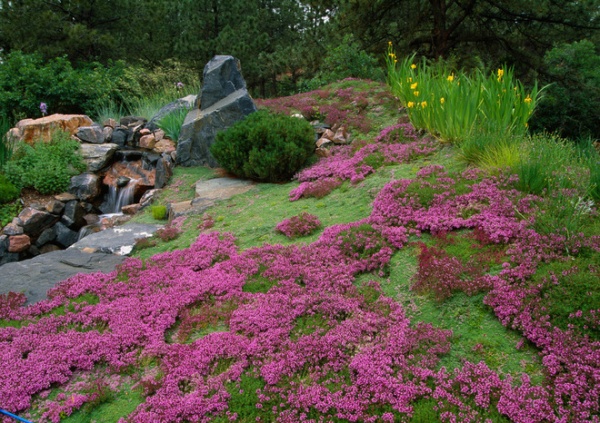
6. Spanish Shawl
(Heterocentron elegans)
The hot-pink blooms of Spanish shawl make it a popular ground cover in frost-free areas. The plant forms a low, dense carpet and has an indefinite spread, sometimes spreading too vigorously in warmer gardens. Preferred conditions are well-drained soil in either full sun or partial shade. Spanish shawl is often used in rock gardens and hanging baskets.
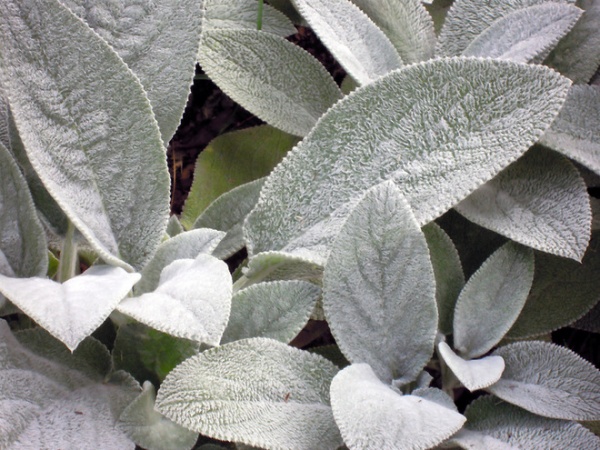
7. Lamb’s Ear
(Stachys byzantina)
Grown for its carpet of fuzzy silver foliage, lamb’s ear is used extensively in gardens from cottage to contemporary. In spring and summer, it produces pretty pink or purple flowers, though some cultivars, such as ‘Silver Carpet’, are nonflowering. Lamb’s ear copes well with poor soil as long as it is well drained, and loves the sun, although it will tolerate shade. Divide plants every two to four years to prevent the centers of the clumps from browning.
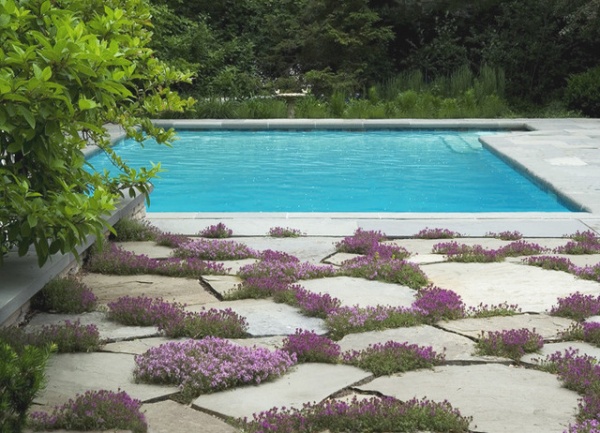
8. Creeping Thyme
(Thymus praecox)
This low-growing form of the common herb can spread over large areas. It is used as a ground cover or a substitute lawn in many gardens. Its leaves are tiny and aromatic, and its flowers are normally purple, mauve or white in summer. The plant is frost hardy, preferring moist, well-drained soil and a sunny position. There are many varieties of creeping thyme with different-colored leaves and width of spread, so choose one that suits the space you have available.
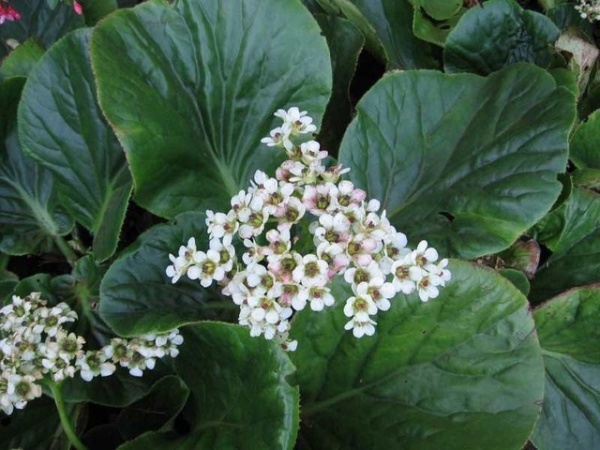
9. Bergenia
Large paddle- or oval-shaped leathery leaves make versatile bergenia an ideal ground cover for cold-climate gardens with a subtropical theme, while its flowers, in shades of pink or white, are perfect for cottage gardens and perennial borders. The leaves of some varieties have a reddish-brown tinge during the winter.
This plant loves a partially shady position, with moist, well-drained soil, but can tolerate sun if the roots are cool. It forms large clumps that can be broken up to form new plants. Popular cultivars include ‘Red Beauty’, ‘Bressingham Ruby’ and ‘Bressingham White’.
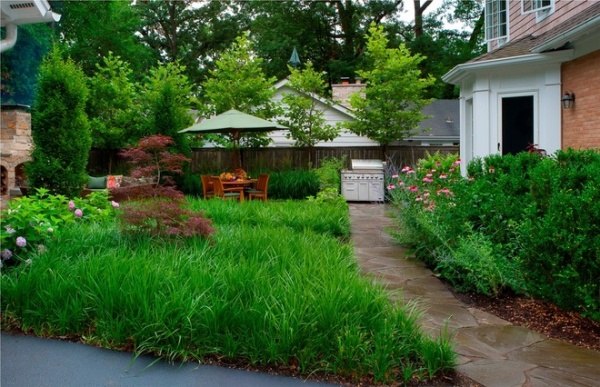
10. Liriope muscari
Also known as lilyturf, Liriope forms dense, grassy clumps that are covered in spiky purple-blue flowers in summer and fall. Low in maintenance, apart from the need to keep snails at bay, frost-hardy Liriope is perfect for areas of dry shade under trees and shrubs. It also grows well in full sun and is often used as an edging plant. Large clumps can be divided in autumn after flowering to create new plants. Popular cultivars include ‘Royal Purple’, ‘Variegata’ and ‘Big Blue’.












